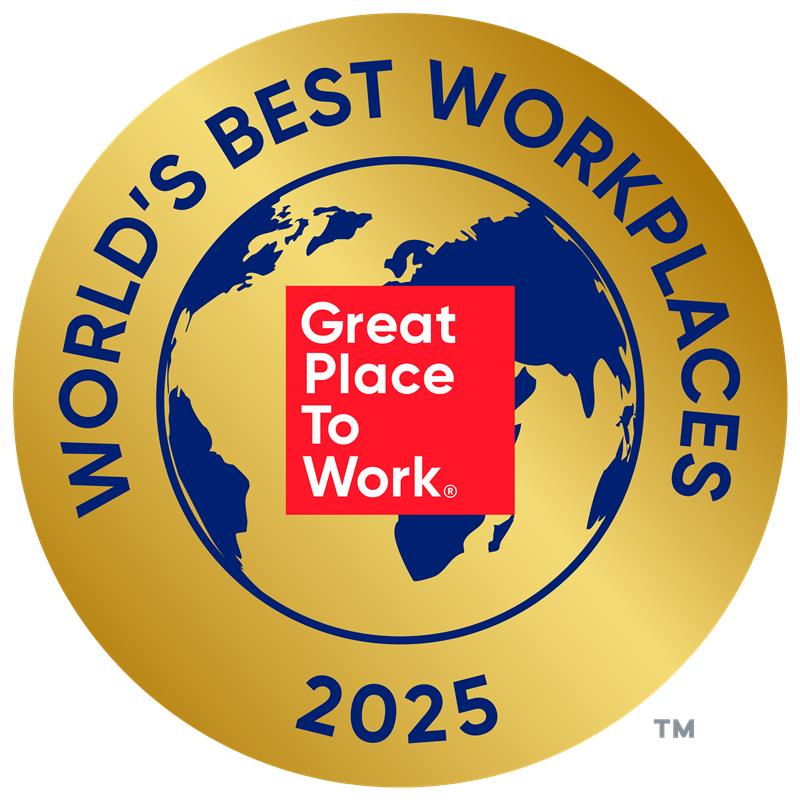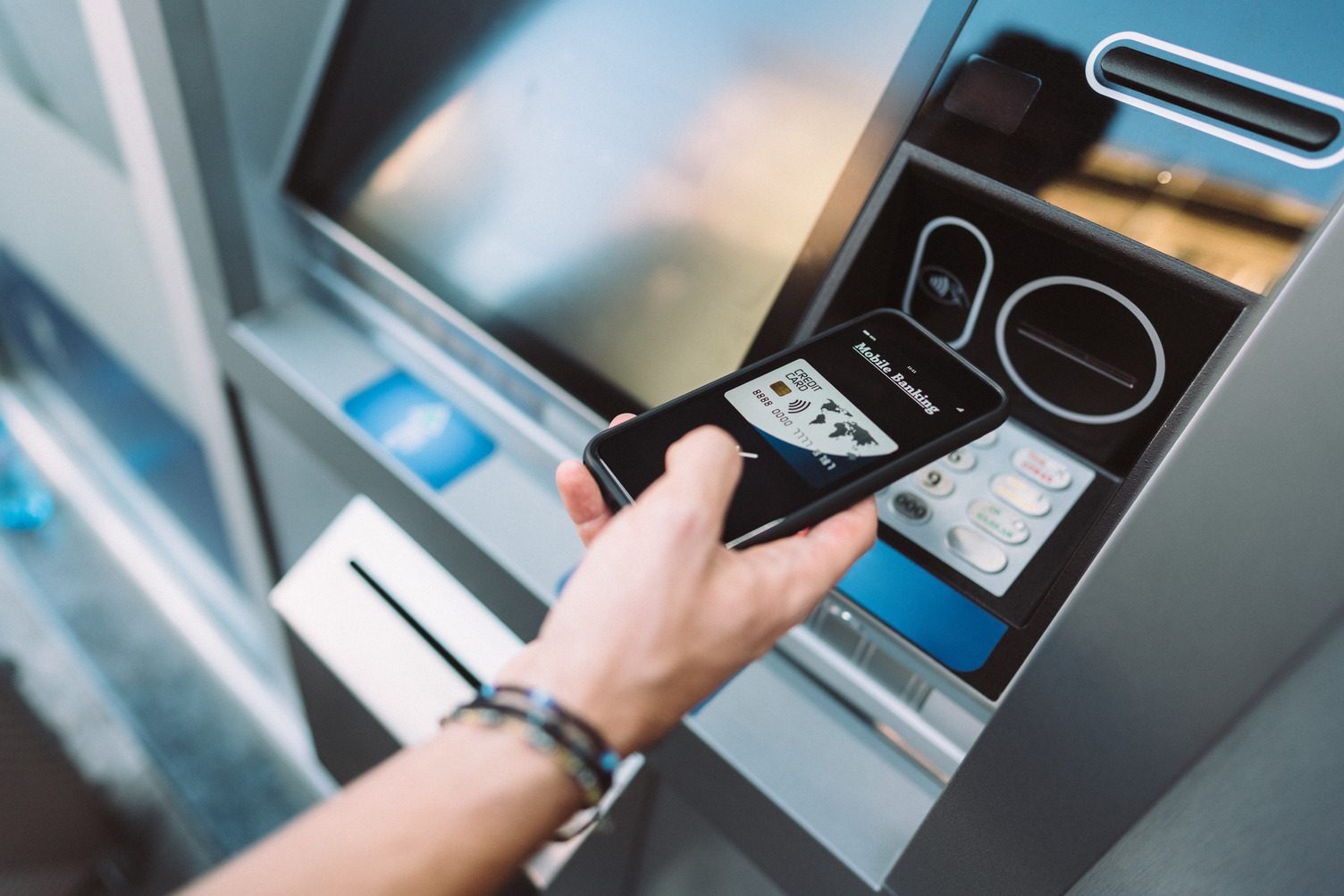
At Experian, we often say our people are our biggest superpower – and today, I’m thrilled to share that this belief has been recognised once again. Experian has been named one of the 2025 World’s Best Workplaces™ by Fortune and Great Place to Work® for the second year in a row.
This achievement reflects the culture we’ve built together – one that’s welcoming, inclusive, and rooted belonging. It’s a celebration of every colleague who brings their whole self to work, who lifts others up, and who powers opportunities for our clients, consumers, and communities.

We’ve made it our mission to create a workplace where everyone feels included, respected, and empowered. That’s why we’re proud to have earned top scores on the Corporate Equality Index and the Disability Equality Index, and to be recognised with the Outie Award for Workplace Excellence and Belonging.
These recognitions matter. But what matters most is how our people experience life at Experian. Whether it’s collaborating, innovating, or growing through world-class development of products, services and contributing to our communities, our culture is designed to help everyone thrive.
We’ve also made bold commitments to career development. Initiatives like Global Careers Week, the AI-driven performance coach Nadia, and the NextGen Forum – a global leadership development programme for emerging talent from across our regions – give our people the resources to take charge of their growth and build a “One Experian” mindset.
Being named one of the World’s Best Workplaces is a moment to celebrate but also a reminder to keep aiming higher. The world of work is evolving fast, and so are we. From embracing AI to enhancing our digital workplace experience, we’ll continue to push forward and listen to our people every step of the way.
Questions we will discuss:
- What does “retirement readiness” mean to you, and how can someone tell when they are financially ready to retire?
- Is there a magic number for retirement savings, and what factors should someone consider when setting a retirement goal?
- How can someone estimate their retirement expenses realistically?
- What are some common myths or misconceptions about how much money you need to retire?
- How should Gen Z, Millennials, and Gen Xers each approach retirement planning differently based on their stage of life?
- What are the biggest obstacles people face when trying to save for retirement, and how can they overcome them?
- How can you balance saving for retirement with paying off debt or supporting family today?
- What tools, calculators, or strategies can help people figure out if they’re on track for retirement?
- How can people prepare for unexpected costs or life changes that could impact their retirement plans?
- What’s one piece of advice you’d give someone just starting—or restarting—their retirement savings journey?
| Columns 1 | Column 2 | Column 3 | Column 4 |
|---|---|---|---|
| Row 1 Col 1 | |||
| Row 2 Col 1 | |||
| Row 3 Col 1 | |||
| Footer 1 | Footer 2 | Footer 3 | Footer 4 |

Credit Chat
Stretching your Dollars: Practical Tips to Cut Costs and Save More
February 5, 2025 3-4 PM ET
- What does “retirement readiness” mean to you, and how can someone tell when they are financially ready to retire?
- Is there a magic number for retirement savings, and what factors should someone consider when setting a retirement goal?
- How can someone estimate their retirement expenses realistically?

Greater transparency in buy now, pay later activity is key to helping consumers build their credit histories and supporting responsible lending. We have members of the military right now right out of high school and there’s not a lot of experience managing their own money. They’re quickly thrust into a place where they don’t have a support system to do that. We have members of the military right now right out of high school and there’s not a lot of experience managing their own money. They’re quickly thrust into a place where they don’t have a support system to do that. We have members of the military right now right out of high school and there’s not a lot of experience managing their own money. They’re quickly thrust into a place where they don’t have a support system to do that. We have members of the military right now right out of high school and there’s not a lot of experience managing their own money. They’re quickly thrust into a place where they don’t have a support system to do that. We have members of the military right now right out of high school and there’s not a lot of experience managing their own money. They’re quickly thrust into a place where they don’t have a support system to do that.
Experian North AmericaScott Brown, Group President, Financial Services

Experian Data Breach Resolution and BillGuard®, the leading personal finance security company, have launched a strategic collaboration to better protect consumers during an unprecedented era of identity theft. Responding to the recent wave of payment card breaches, the companies unveiled an advanced identity protection suite, combining BillGuard’s award-winning card fraud monitoring mobile application with Experian’s award-winning identity protection product, ProtectMyID®. A sharp increase in data breaches over the last several years has compromised the payment cards of millions of American cardholders. Fraudulent use of compromised credit cards and debit cards now accounts for more than 85 percent of all identity theft, which causes nearly $25 billion in financial damage in the U.S. each year . Unfortunately, financial institutions detect less than half of ECF, leaving cardholders to catch the rest – or personally absorb the financial loss. BillGuard’s popular mobile application utilizes crowdsourcing techniques and big data analytics to alert cardholders to suspicious transactions that have posted to their credit cards, debit cards and bank accounts. The app also sends data breach alerts if a cardholder has transacted at a retailer during a breach period and provides card location alerts when a card is used away from the owner’s smart phone, indicating the card is probably not being used by its owner. The new joint offering will allow consumers to access the ProtectMyID identity theft protection suite within the BillGuard app, along with the following BillGuard features: Card Fraud Monitoring and Alerts – Unlimited credit card, debit card, ATM and bank accounts monitored 24/7 for suspicious activity. Card Location Alerts – Alerts cardholders when their credit or debit card is used at a store or ATM away from them, using geolocation data from their mobile phone. Data Breach Monitoring and Alerts – Alerts cardholders when they have shopped at a merchant during a breach period, helping them immediately monitor their cards for fraud. Spend Tracking and Analytics – Helps consumers stay on top of exactly where their money is going with visual analytics and quick, email-like transaction review. Card Concierge – Cardholders can resolve billing inquiries and disputes with merchants directly from within the BillGuard app. For more information about BillGuard, visit BillGuard.com. If you are a ProtectMyID member, please download the BillGuard app today for free from the Apple or Google Play stores.

At Experian, we focus on helping consumers navigate and better understand the world of credit. Recently, we’ve made some changes within our consumer products. We’re excited to share all the developments we’ve been working on – not the least of which is the inclusion of offering our members their FICO® Scores using Experian data. FICO® Scores are used in 90 percent of credit decisions. They’re the credit scores that most consumers recognize as being most relevant. We know this because they told us. Consumers asked us about FICO because a majority of lenders use FICO® Scores as a factor in their credit decisions – and we heard them. It’s not just a FICO® Score that we’ll deliver to consumers as a part of these enhancements. A host of other product features are being added to pair the score that people trust with the resources they need to live knowledgeably, and own their financial futures. The enhancements bring together our identity fraud resolution assistance and best-in-class customer care agent support, combining them with new elements like score factors, educational information about FICO® Scores, and broad web accessibility to create immense new value for our members. People have asked us for more ways to understand their credit and track it when they’re on the go. We’re passionate about giving that flexibility, security and information to our members. They deserve it. Our consumer products help connect people with their credit so they can experience financial freedom in new ways. That’s what we’re continuously looking at: how to show all the ways that each person’s behavior shapes his or her credit, and create resources that help people make wiser decisions with it. Helping people find their credit inspiration—and affirming the value of their focus—isn’t easy, but it is important. That’s how we turn data into insights, and impact the lives of our members. They trust us to do just that, and maintaining their trust remains one of my top priorities. Bringing together Experian and FICO® as part of this update just makes sense. It helps us deliver an incredible asset to members wherever they are in their financial lives. Credit is truly a lifetime journey – and one where many have questions to ask of a trusted partner. Combining a FICO® Score with the detail of an Experian credit report is a natural evolution that helps keep our products strong, but we’re not done making improvements just yet. We’re ready to live the future with our members. We see it as a place where we’ll always be seeking new horizons to drive toward. There’s a lot to look forward to at Experian. And there always will be. Check out our official announcement here. Check out more on Experian Credit Tracker here. This article is provided for general guidance and information. It is not intended as, nor should it be construed to be, legal, financial or other professional advice. Please consult with your attorney or financial advisor to discuss any legal or financial issues involved with credit decisions.

Today, we are excited to announce that Experian has made it onto the Gartner Magic Quadrant for Data Quality Tools. We are positioned as a ‘Challenger’, which we believe means our organization is recognized as performing well within our line of expertise, providing customers with the right products and services they need to effectively manage their data. We believe this demonstrates our ongoing commitment to data quality across Experian and our success in providing customers across the globe with ‘business-user-friendly’ tools and expert advice to meet ever-more-challenging data needs. We focus on helping users across businesses, from IT to commercial business stakeholders, understand and leverage the valuable asset of data. We work hard to listen to our customers and build solutions that reflect: Ease-of-use – Products that can be leveraged quickly and effectively by business users outside of IT with the wider business objectives in mind. Flexibility – Deployment models that quickly enable a complete end-to-end data quality solution for businesses of all sizes. Expertise – Leading support through the implementation process and beyond. Value – Solutions implemented quickly to begin delivering value. We take pride in delivering these products across the globe and continuing to drive innovation in the data quality space, an increasingly growing and important sector of the market. Thank you to our customers and valued partners for helping make this position possible. We look forward to continuing to build strong data quality solutions for years to come. You can access the full Gartner report from our website. Disclaimer: This graphic was published by Gartner, Inc. as part of a larger research document and should be evaluated in the context of the entire document. The Gartner document is available upon request from Experian Data Quality. Gartner does not endorse any vendor, product or service depicted in its research publications, and does not advise technology users to select only those vendors with the highest ratings. Gartner research publications consist of the opinions of Gartner’s research organization and should not be construed as statements of fact. Gartner disclaims all warranties, expressed or implied, with respect to this research, including any warranties of merchantability or fitness for a particular purpose.
2024 Best Place to Work for Disability Inclusion


